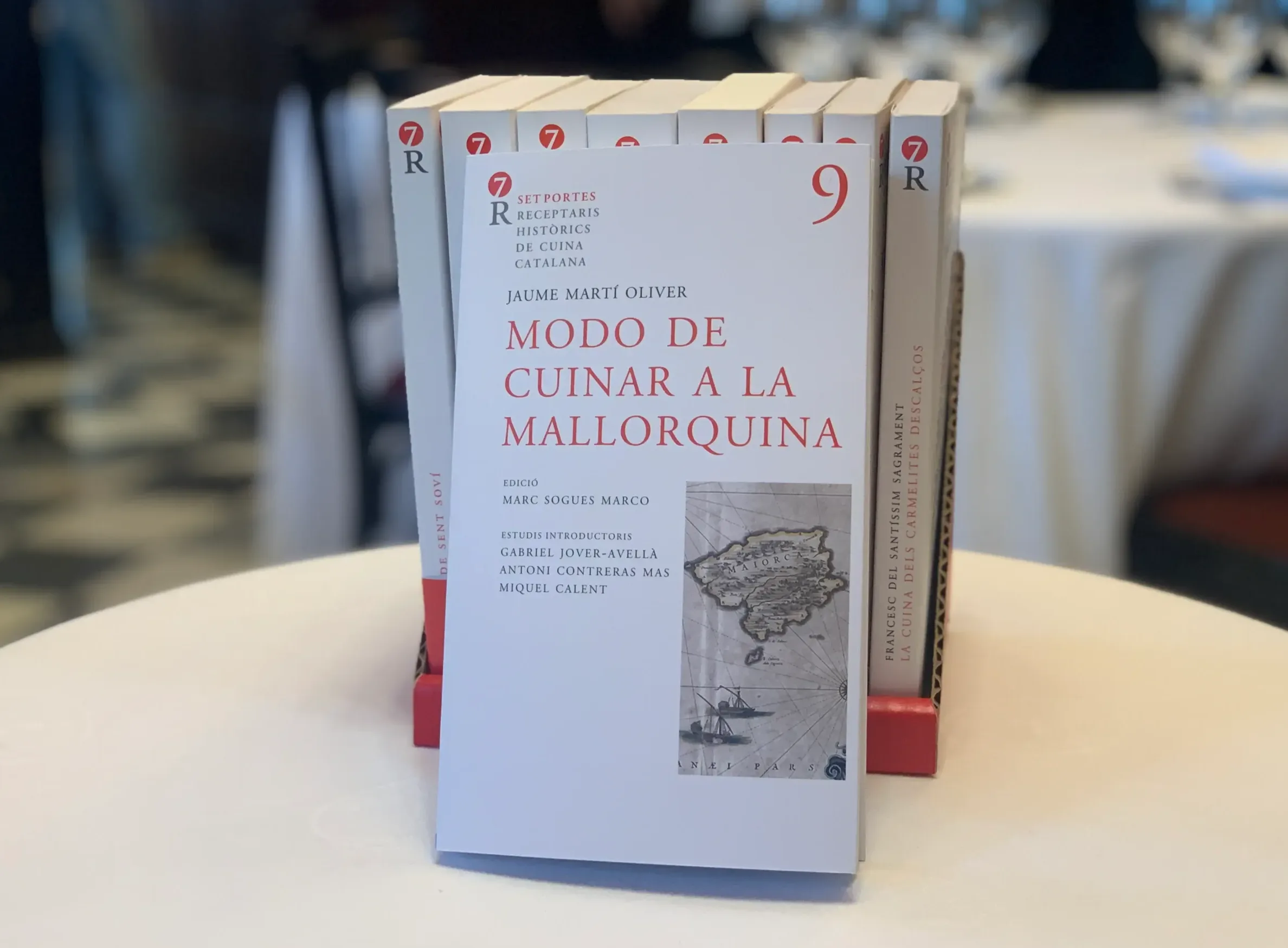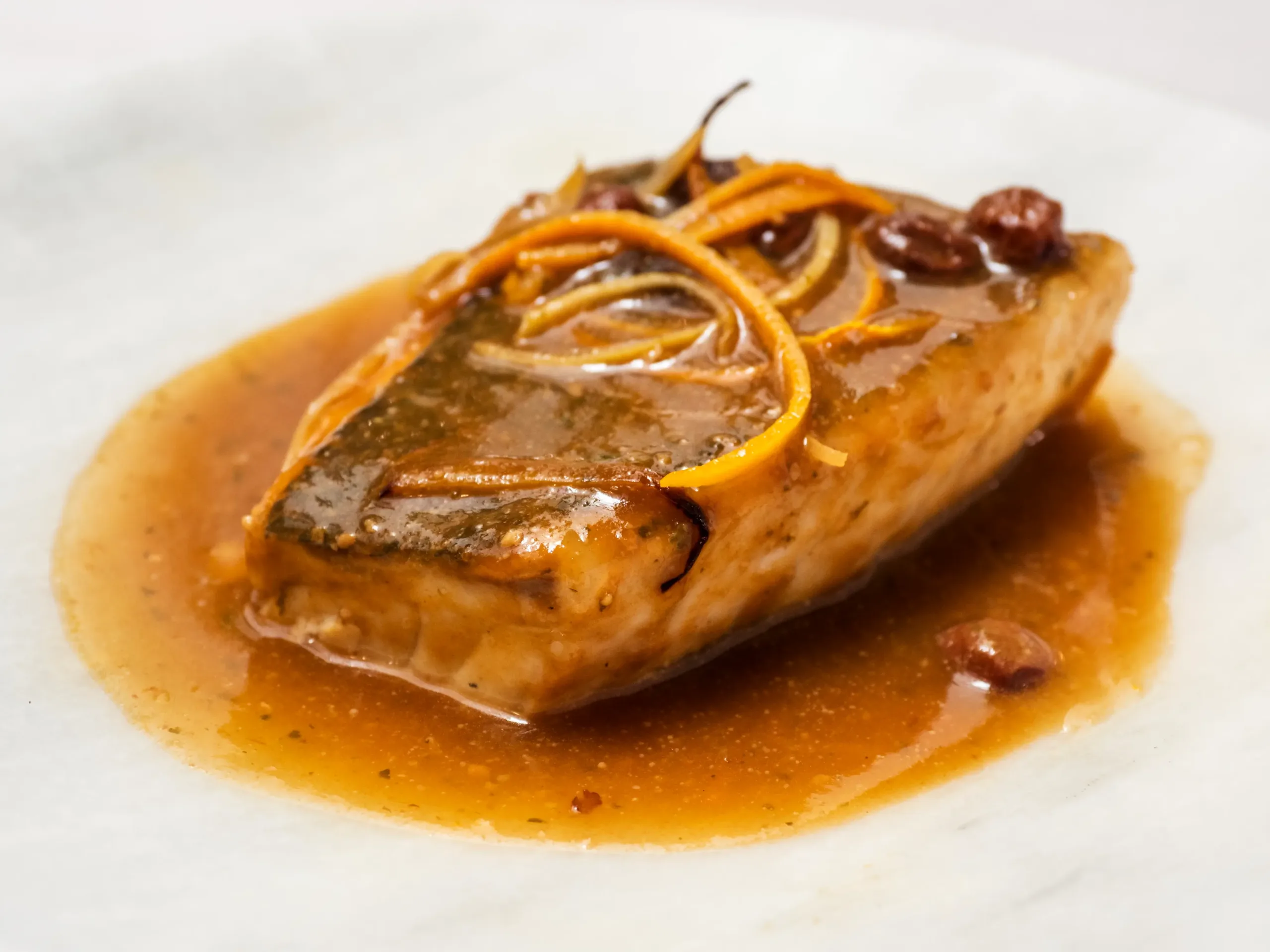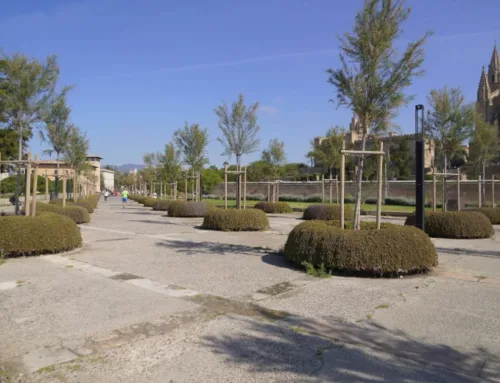Up to 168 recipes from the 18th century, most of them gathered by the Augustinian friar Jaume Martí Oliver (1712- 1788), are compiled in Modo de cuinar a la mallorquina (How to cook Mallorcan style), a book published by the restaurant 7 Portes with Editorial Barcino, which rescues a valuable manuscript that gives an account of what convent cooking was like at that time. Martí Oliver’s book is “the first Mallorcan cookery recipe book: it is not the first one that was written, but it is the first one that has been preserved”, says Antoni Riera, co-director of the scientific committee of this new volume, which is part of the Col·lecció de Receptaris Històrics de Cuina Catalana (Collection of Historical Recipes of
Catalan Cuisine).
Modo de cuinar a la mallorquina reflects how the urban middle classes fed themselves more than 300 years ago. The sumptuousness of the Gothic period is no longer present in 18th century cuisine, which does include dishes such as menjar blanc (blancmange), panades de peix (fish pies) and some very local dishes, such as sobrassada amb mel (sobrasada with honey) or conill amb ceba (rabbit with onions), Riera points out.
Variety of ingredients
Meat and fish play an important role in Martí Oliver’s dishes, although he also uses typical Mallorcan vegetables. “The ingredients are very similar to those of today: basically what was produced on the island. Certainly, some imported products appear, such as spices, but the seasonings are also from here: marjoram, parsley, onion, garlic, etc.”, says the professor emeritus of medieval history.
In Riera’s opinion, Mallorcan cuisine has changed “quite a lot” since then: “It has lost variety, obviously, and has been enriched by the components. The cooking system and the cooking times have changed – nowadays, very few people cook with wood -, the containers are much more hygienic today, but also a large number of products have been incorporated”.
Although the book “is little known and cannot have been used as a guide for the menus of today’s restaurants, the dishes it contains have been reproduced generation after generation. Therefore, it is possible that without knowing it, quite a few of Jaume Martí’s dishes appear updated in today’s kitchens without the chefs being aware that they are reproducing a dish that was codified by an Augustinian at the end of the 18th century”, explains the Mallorcan.
Culinary literature only for men
7 Portes has published other monastic cookbooks on orders such as the Carthusians, the Augustinians and the Carmelites. “All of them are male convents, because curiously enough, women do not write cookbooks; it seems that they join convents already knowing how to cook. On the other hand, men do not, and that is why they have to have a cook (a friar) who, before leaving the post, writes everything down so that they do not have to face the apprenticeship of a person who starts from scratch. The succession from one cook to another is done slowly and without losing food quality thanks to these cookbooks”, Riera describes.

Portada del libro Modo de cuinar a la mallorquina
Salseta particular de peix (special fish sauce) recipe (Modo de cuinar a la mallorquina)

Boiling is composed of minced garlic, parsley, bread soaked in water afore and then wrung of its water, and oil; well-fried onion, chopped pine nuts, raisins, garlic,
lemon juice and zest, oranges and tomatoes. The lemon zest, vinegar, white wine with bay leaves and whole garlic heads.







Leave A Comment